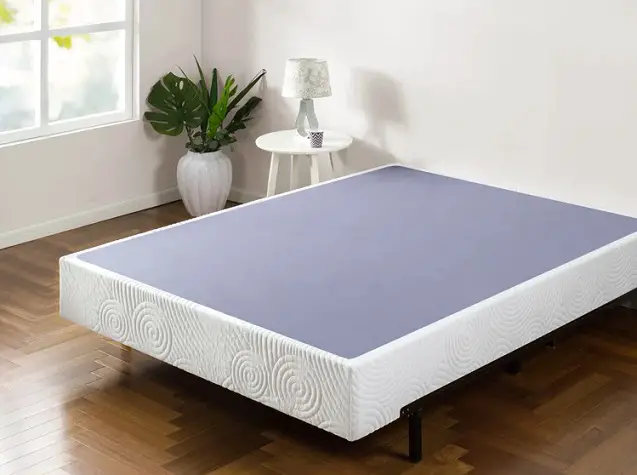I recently found myself facing the daunting task of disassembling a metal futon frame, and let me tell you, it was quite the challenge. With no prior experience in furniture dismantling, I was determined to conquer this project head-on.
After countless hours of trial and error, I can now confidently say that I have mastered the art of disassembling a metal futon frame. In this comprehensive guide, I will share with you my step-by-step process, along with some helpful tips and tricks, so you too can tackle this seemingly intimidating task with ease.
So, grab your toolkit and let’s get started on this journey of disassembling a metal futon frame!
Table of Contents
Preparing for Disassembly
Disassembling a metal futon frame may seem like a daunting task, but with the right tools and a systematic approach, it can be done easily. Before diving into the disassembly process, it is important to gather the necessary tools.
You will need a screwdriver, preferably one with interchangeable heads, a wrench, and possibly a lubricant if any parts are difficult to unscrew. Having these tools readily available will make the disassembly process much smoother.
Once you have gathered your tools, the next step is to clear the area around the futon frame. Make sure there is enough space to comfortably work around the frame without any obstructions. This will help to prevent any accidental damage or injury during the disassembly process.
Before you start taking apart the futon frame, it is essential to remove all cushions and bedding. This will not only make the frame lighter and easier to handle but also protect the upholstery from any potential damage. Once the mattress has been removed, set it aside in a safe place where it won’t be in the way.
Removing the Mattress
The first step in disassembling a metal futon frame is to remove the futon mattress. This can typically be done by carefully lifting the mattress off the frame.
It is important to be mindful of any attachments that may be securing the mattress to the frame, such as Velcro strips or straps. Once the mattress has been removed, set it aside in a clean and dry area.
Detaching the Arms
After removing the mattress, the next step is to detach the arms of the futon frame. To do this, locate the arm bolts that connect the arms to the frame. These bolts are usually found near the bottom of the arms and may require a wrench or screwdriver to loosen and remove them.
Once the bolts have been unscrewed, carefully lift and remove the arms from the frame. It is important to handle the arms with care to avoid any damage during the disassembly process.
Taking Apart the Seat and Backrest
With the arms detached, the next step is to disassemble the seat and backrest of the futon frame. Start by locating the seat frame bolts, which can usually be found underneath the seat. Use a screwdriver or wrench to remove these bolts and lift the seat frame off the main frame.
After removing the seat frame, locate the backrest connectors. These are often located at the top of the backrest and may be secured with screws or bolts. Carefully detach these connectors to separate the backrest from the main frame. It is important to take caution while removing the backrest connectors to avoid any damage to the frame or yourself.
Disassembling the Frame
Once the seat and backrest have been removed, it is time to disassemble the main frame of the futon. Start by identifying the frame bolts, which hold the frame pieces together. These bolts are typically found along the sides and corners of the frame. Use a screwdriver or wrench to loosen and remove the frame bolts.
After loosening the frame bolts, carefully separate the frame pieces. This may require some twisting or shifting of the frame to release any interlocking mechanisms.
Take your time and ensure that all bolts are fully removed before attempting to separate the frame pieces. It is important to handle the frame with care to avoid any injuries or damage.
Removing Additional Components
In some cases, there may be additional components attached to the futon frame that need to be removed. This could include support legs or any other attachments that were not part of the main frame. Carefully detach these remaining parts using appropriate tools, such as a screwdriver or wrench, if necessary.
Identify and remove any support legs that may be attached to the frame. These can usually be unscrewed from the frame using a wrench. Ensure that all screws or bolts are fully removed before attempting to detach the support legs.
Storing and Transporting
After disassembling the futon frame, it is important to properly store and transport the frame pieces. Start by cleaning the disassembled frame to remove any dirt or debris. This will help to preserve the longevity of the frame and prevent any damage during storage.
Once the frame is clean, wrap and protect the frame pieces using blankets or bubble wrap. This will help to prevent any scratches or dents during transportation or storage. Secure the wrapped pieces with tape or straps to ensure they remain intact during transit.
Troubleshooting and Tips
During the disassembly process, there are a few troubleshooting tips that can come in handy. If any parts are difficult to unscrew, you can use a lubricant to help loosen them. Apply the lubricant to the screws or bolts and wait a few minutes before attempting to unscrew them.
To make the reassembly process easier, you can label or document the parts as you disassemble them. This will help you identify which pieces go where when it comes time to put the futon frame back together.
Lastly, it is always a good idea to check for any hidden screws or bolts that may be securing the frame pieces together. Sometimes, there may be extra attachments that are not immediately visible. Take your time and carefully inspect the frame for any hidden screws or bolts before attempting to separate the pieces.
Reassembling the Futon Frame
Once you are ready to put the futon frame back together, follow the reverse order of disassembly. Start by connecting the frame pieces and tightening the frame bolts. Ensure that all frame pieces are securely fastened to avoid any wobbling or instability.
Next, attach the backrest to the main frame using the backrest connectors. Make sure the connectors are fully secured to prevent any movement or shifting of the backrest.
Once the backrest is in place, attach the seat frame to the main frame using the seat frame bolts. Ensure that all bolts are tightly fastened to provide a sturdy seat for the mattress.
Finally, reattach the arms to the frame using the arm bolts. Make sure to tighten the bolts to secure the arms, but be careful not to overtighten and risk damaging the frame.
Safety Precautions
Throughout the entire disassembly and reassembly process, it is important to prioritize safety. Use proper lifting techniques when handling heavy frame pieces to avoid straining your back or causing injury. If necessary, ask for assistance from a friend or family member to help lift and carry the frame.
Wearing protective gloves can also help to prevent any cuts or scrapes while handling the futon frame. Additionally, it’s important to be cautious and aware of any sharp edges or protruding hardware on the frame.
If at any point you feel unsure or uncomfortable with the disassembly process, it is always best to seek professional assistance. A furniture assembly service or repair technician can help ensure that the futon frame is safely disassembled and reassembled without any risk of damage or injury.
By following this comprehensive guide, you can successfully disassemble a metal futon frame and prepare it for storage or transportation. With the right tools, careful execution, and a friendly tone of voice, you’ll be well-equipped to tackle this task. Happy disassembling!


